Las 15 mejores fotografías de vida salvaje de 2024 según el Museo de Historia Natural
Categorias: Animales | Arte | Belleza | Escuela de fotografía | Mundo | Naturaleza | Personas | Proyecto fotográfico
Por Vika https://pictolic.com/es/article/las-15-mejores-fotografas-de-vida-salvaje-de-2024-segn-el-museo-de-historia-natural.htmlSe han anunciado los ganadores del concurso Wildlife Photographer of the Year 2024, organizado por el Museo de Historia Natural. A partir de un récord de 59.228 imágenes presentadas por fotógrafos de 117 países y territorios, hemos compilado una lista de las 15 mejores imágenes seleccionadas por el jurado del concurso.
Shane Gross, fotoperiodista canadiense de conservación marina, fue nombrado Wildlife Photographer of the Year 2024 por su impresionante imagen "The Swarm of Life", que captura el fascinante mundo submarino de los renacuajos de sapo occidental.
Una exposición con las 100 imágenes ganadoras estará abierta en el Museo de Historia Natural de Londres hasta el 29 de junio de 2025.
Más información: nhm.ac.uk | youtube.com | Instagram
15 FOTOS
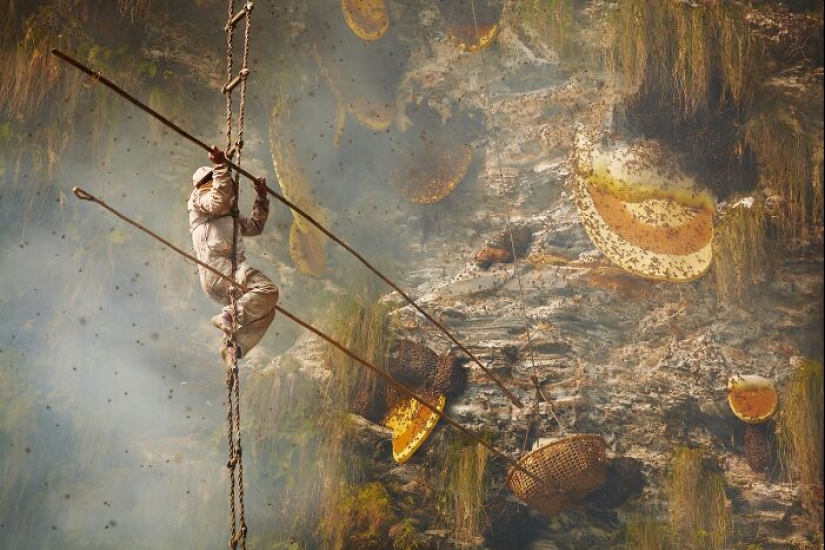
#1 Winner, Behaviour: Amphibians And Reptiles: Wetland Wrestle By Karine Aigner, USA
Karine Aigner recognizes the skin of a yellow anaconda as it coils itself around the snout of a yacaré caiman.
Karine's tour group had stopped to photograph some marsh deer when she noticed an odd shape floating in the water. Karine quickly recognized the reptiles through binoculars and watched as they struggled with each other.
Caimans are generalist feeders and will eat snakes. As anacondas get larger, they will include reptiles in their diet. It’s hard to determine who is the aggressor here. On the snake’s back are two tabanids, blood-sucking horseflies that are known to target reptiles.
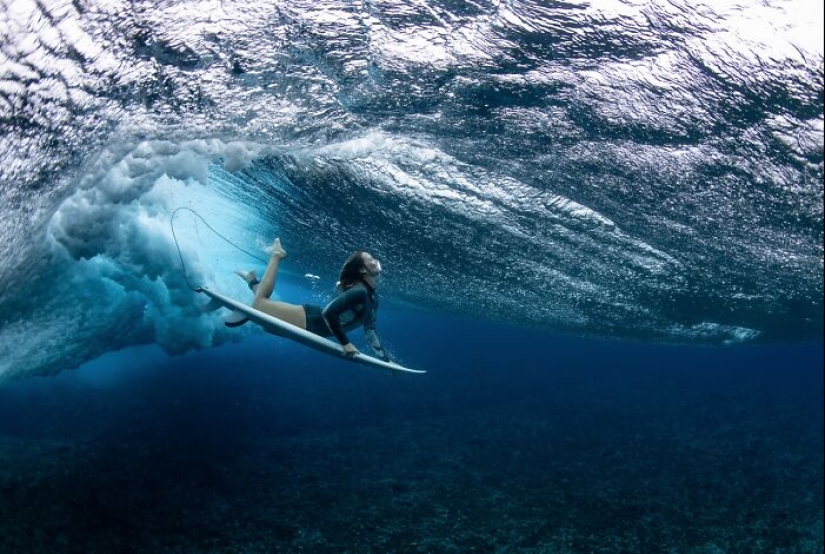
#2 Winner, Wetlands: The Bigger Picture: The Swarm Of Life By Shane Gross, Canada
Shane Gross looks under the surface layer of lily pads as a mass of western toad tadpoles swim past.
Shane snorkeled in the lake for several hours, through carpets of lily pads. This prevented any disturbance of the fine layers of silt and algae covering the lake bottom, which would have reduced visibility.
Western toad tadpoles swim up from the safer depths of the lake, dodging predators and trying to reach the shallows, where they can feed. The tadpoles start becoming toads between four and 12 weeks after hatching. An estimated 99% will not survive to adulthood.
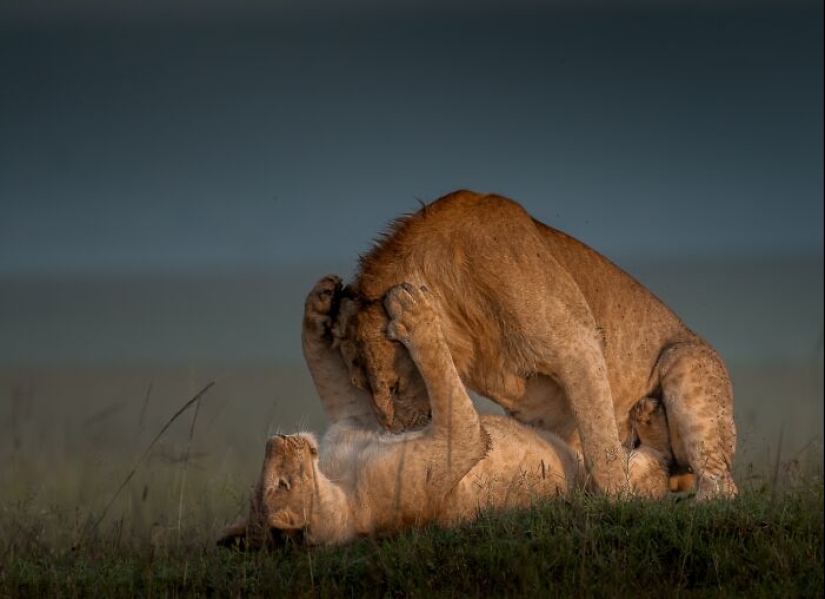
#3 Winner, Animals In Their Environment: Frontier Of The Lynx By Igor Metelskiy, Russia
Igor Metelskiy shows a lynx stretching in the early evening sunshine, its body mirroring the undulating wilderness.
The remote location and changing weather conditions made access to this spot– and transporting equipment there – a challenge. Igor positioned his camera trap near the footprints of potential prey.
It took more than six months of waiting to achieve this relaxed image of the elusive lynx. A survey carried out in 2013 estimated the entire Russian lynx population was around 22,500 individuals, with numbers for the Russian Far East, including those in Primorsky Krai, at 5,890.
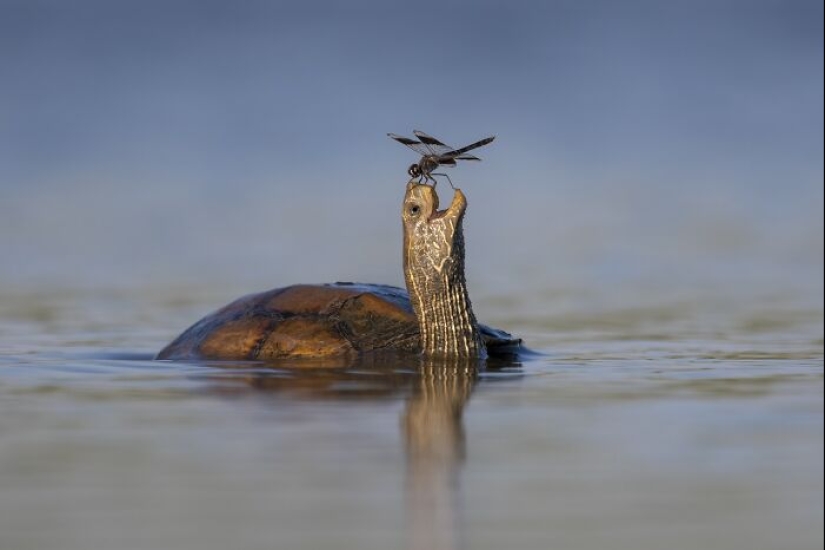
#4 Winner, Behaviour: Invertebrates: The Demolition Squad By Ingo Arndt, Germany
Ingo Arndt documents the efficient dismemberment of a blue ground beetle by wood ants.‘Full of ants’ is how Ingo described himself after lying next to the ants’ nest for just a few minutes. Ingo watched as the redwood ants carved an already dead beetle into pieces small enough to fit through the entrance to their nest.
Much of the redwood ants’ nourishment comes from honeydew secreted by aphids, but they also need protein. They are capable of killing insects and other invertebrates much larger than themselves through sheer strength in numbers.

#5 Winner, Behaviour: Birds: Practice Makes Perfect By Jack Zhi, USA
Jack Zhi enjoys watching a young falcon practicing its hunting skills on a butterfly, above its sea-cliff nest.
Jack has been visiting this area for the past eight years, observing the constant presence of one of the birds and photographing the chicks. On this day it was a challenge to track the action because the birds were so fast.
Should this young peregrine falcon make it to adulthood, tests have shown it will be capable of stooping or dropping down on its prey from above, at a speed of more than 300 kilometers per hour (186 miles per hour).

#6 Winner, Urban Wildlife: Tiger In Town By Robin Darius Conz, Germany
Robin Darius Conz watches a tiger on a hillside against the backdrop of a town where forests once grew.
Robin was following this tiger as part of a documentary team filming the wildlife of the Western Ghats. On this day, he used a drone to watch the tiger explore its territory before it settled in this spot.
The protected areas in the Western Ghats, where tigers are carefully monitored, are some of the most biodiverse landscapes in India and have a stable population of tigers. Outside these areas, where development has created conflict between humans and wildlife, tiger occupancy has declined.

#7 Winner, Photojournalism: Dusting For New Evidence By Britta Jaschinski, Germany/UK
Britta Jaschinski looks on as a crime scene investigator from London’sMetropolitan Police dusts for prints on a confiscated tusk.
Britta spent time at the CITES Border Force department where confiscated animal products are tested. Newly developed magnetic powder allows experts to obtain fingerprints from ivory up to 28 days after it was touched, increasing the chances of identifying those involved in its illegal trade.
The International Fund for Animal Welfare has distributed more than 200 specially created kits to border forces from 40 countries. They have been instrumental in four cases that resulted in 15 arrests.
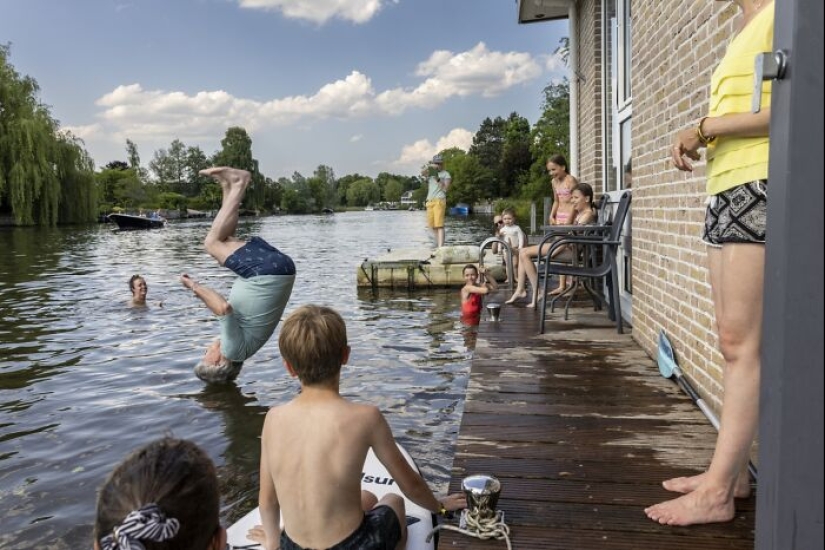
#8 Winner, Behaviour: Mammals: Tranquil Moment By Hikkaduwa Liyanage Prasantha Vinod, Sri Lanka
Hikkaduwa Liyanage Prasantha Vinod finds this serene scene of a young toque macaque sleeping in an adult’s arms.
Resting in a quiet place after a morning of photographing birds and leopards, Vinod soon realized he wasn’t alone. A troop of toque macaques was moving through the trees above. Vinod spotted this young monkey sleeping between feeds and used a telephoto lens to frame the peaceful moment.
Toque macaques easily adapt to human foods, and the encroachment of plants into their habitat has seen an increase in incidents of shooting, snaring, and poisoning by farmers trying to preserve their crops.

#9 Winner, Animal Portraits: On Watch By John E Marriott, Canada
John E Marriott frames a lynx resting, with its fully grown young sheltering from the cold wind behind it.
John had been tracking this family group for almost a week, wearing snowshoes and carrying light camera gear to make his way through snowy forests. When fresh tracks led him to the group, he kept his distance to make sure he didn’t disturb them.
Lynx numbers usually reflect the natural population fluctuations of their main prey species, the snowshoe hare. With climate change reducing snow coverage and giving other predators more opportunities to hunt the hares, hare populations may decline, in turn affecting the lynx population.
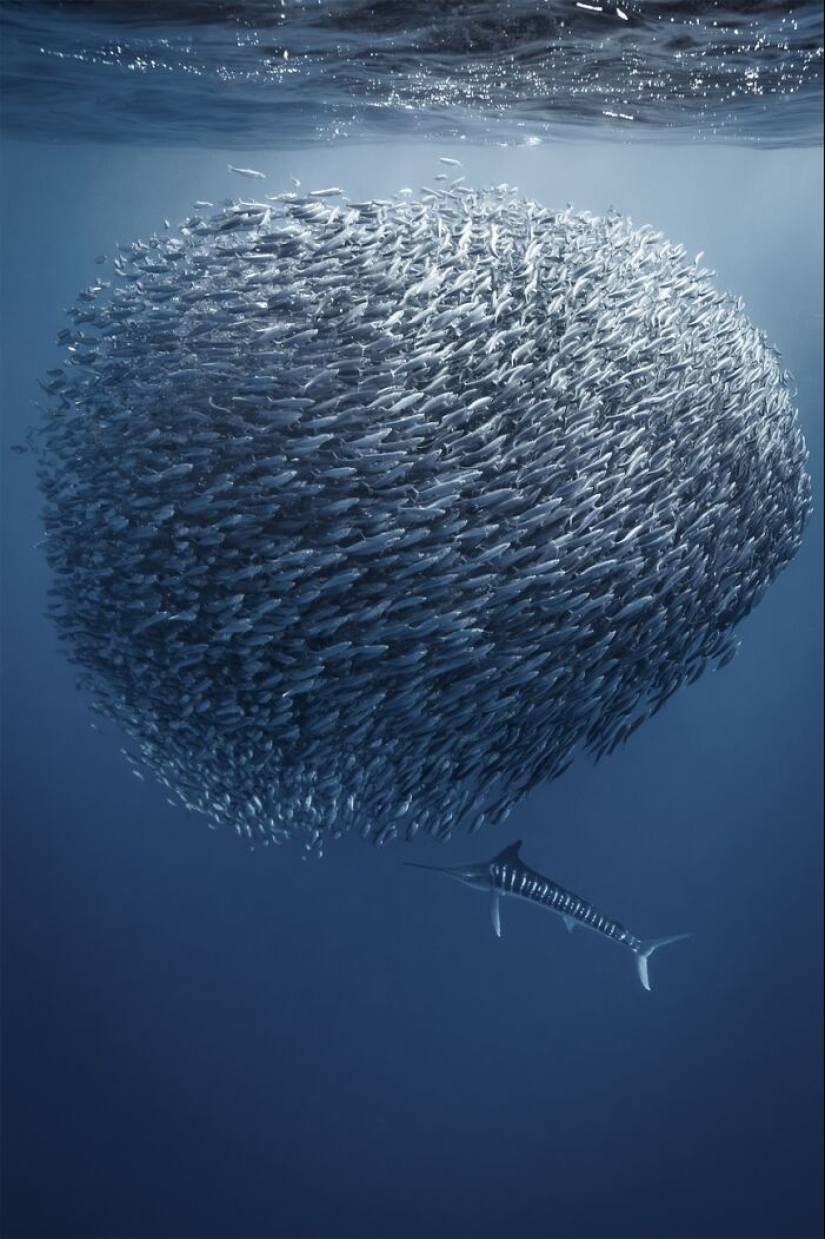
#10 Winner, Photojournalist Story Award: Dolphins Of The Forest By Thomas Peschak, Germany/South Africa
‘Among the Trees’
The Amazon river dolphin is one of two freshwater dolphin species living in the Amazon and Orinoco basins. Only this species has evolved to explore the seasonally flooded forest habitat.
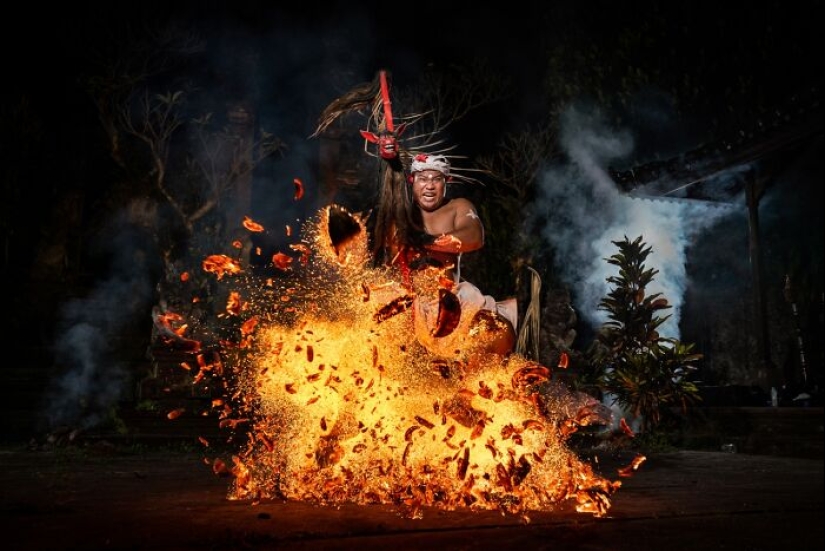
#11 Winner, 10 Years And Under Free As A Bird By Alberto Román Gómez, Spain
Alberto Román Gómez contrasts a delicate stonechat bird with a hefty chain.
Watching from the window of his father’s car at the edge of the Sierra deGrazalema Natural Park, Alberto found this young bird tricky to photograph as it was quickly flying back and forth, gathering insects. To Alberto, the stonechat displayed a sense of ownership, as if it were a young guardian overseeing its territory.
This young bird has not yet developed its adult call, which sounds like two stones tapped together. Stonechats tend to prefer open habitats and typically perch on fences.
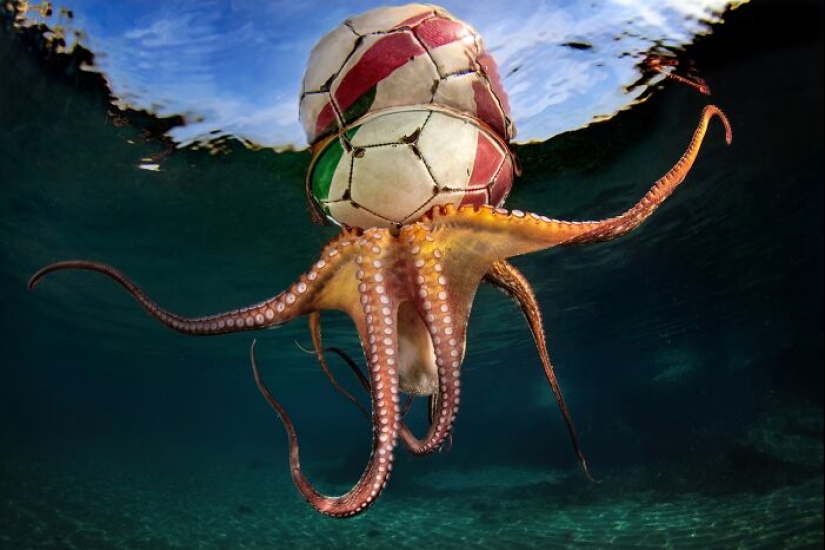
#12 Winner, Impact Award: Hope For The Ninu By Jannico Kelk, Australia
Jannico Kelk illuminates a nine, with the wire grass and shrubs behind it providing a frame against the darkness.
Jannico spent each morning walking the dunes of a conservation reserve, searching for footprints that this rabbit-sized marsupial may have left the night before. Finding tracks near a burrow, he set up his camera trap.
The greater Bilby has many Aboriginal names, including ninu. It was brought to near extinction through predation by introduced foxes and cats. Within fenced reserves where many predators have been eradicated, the bilby is thriving.
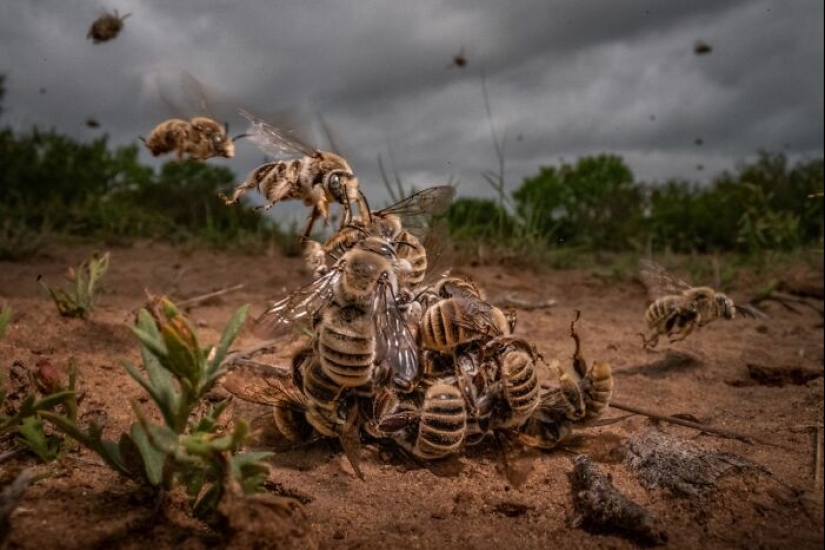
#13 Winner, Impact Award: Recording By Hand By Liwia Pawłowska, Poland
Liwia Pawłowska watches as a relaxed common whitethroat is gently held by a bird ringer.
Liwia is fascinated by bird ringing and has been photographing ringing sessions since she was nine. She says that she hopes her photograph ‘helps others to get to know this topic better.’
Volunteers can assist trained staff at bird-ringing sessions, where a bird’s length, sex, condition, and age are recorded. Data collected helps scientists to monitor populations and track migratory patterns, aiding conservation efforts.
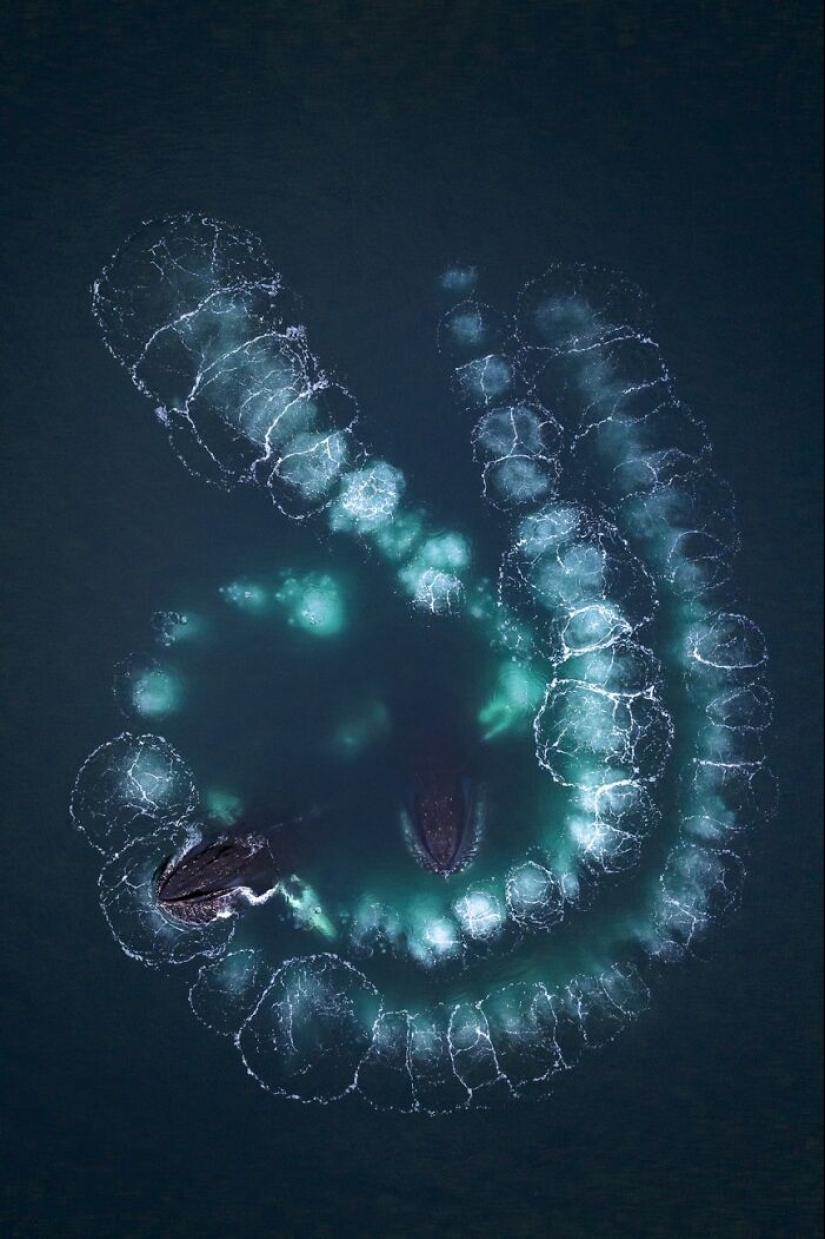
#14 Winner, 15-17 Years: Life Under Dead Wood By Alexis Tinker-Tsavalas, Germany
Alexis Tinker-Tsavalas rolls a log over to see the fruiting bodies of slime mold and a tiny springtail.
Alexis worked fast to take this photograph, as springtails can jump many times their body length in a split second. He used a technique called focus stacking, where 36 images, each with a different area in focus, are combined.
Springtails are barely two millimeters long (less than a tenth of an inch). They are found alongside slime molds and leaf litter all over the world. They feed on microorganisms such as bacteria and fungi, improving soil by helping organic matter to decompose.
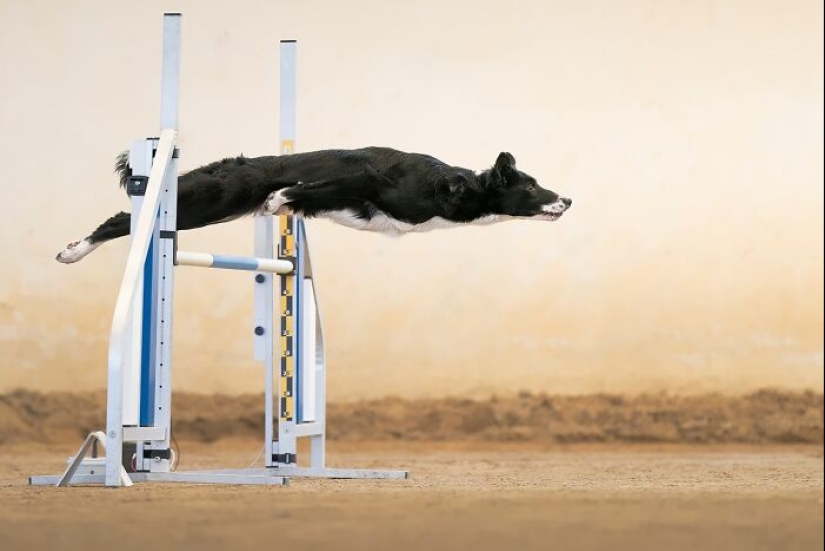
#15 Winner, Underwater: Under The Waterline By Matthew Smith, UK/Australia
Matthew Smith carefully photographs a curious leopard seal beneath the Antarctica ice.
Matthew used a specially made extension he designed for the front of his underwater housing to get this split image. It was his first encounter with a leopard seal. The young seal made several close, curious passes. ‘When it looked straight into the lens barrel, I knew I had something good.’
Though leopard seals are widespread and abundant, overfishing, retreating sea ice, and warming waters mean that krill and penguins – their main food sources– are both in decline.
Palabras clave: Fotografías de vida salvaje | Museo de Historia Natural | Ganadores de premios | Fotografía de vida salvaje | Concurso de fotografía
Publicar artículo de noticiasArtículos Recientes

Cualquiera que haya vivido en un edificio de apartamentos, conoce de primera mano lo difícil que son algunos de los inquilinos. ...

Cuando escuchamos sobre el judaísmo y los judíos, entre muchas asociaciones, el rechazo del cerdo ciertamente aparece en nuestra ...
Artículos relacionados

Los premios al Fotógrafo del Año 1839 han puesto de manifiesto un talento impresionante, con 16 ganadores profesionales de la ...

La naturaleza tiene una forma increíble de cautivarnos, y la fotografía de vida salvaje ofrece una visión de la belleza y ...

El concurso Fotógrafo Subacuático del Año 2025 ha vuelto a revelar una impresionante colección de imágenes premiadas, que ...

Te invitamos a echar un vistazo al equipo de espionaje real que utilizaban agentes de diferentes países hace apenas unas décadas. ...